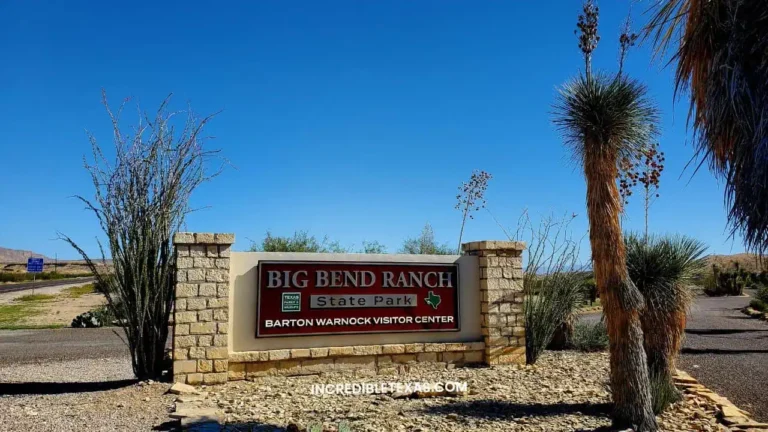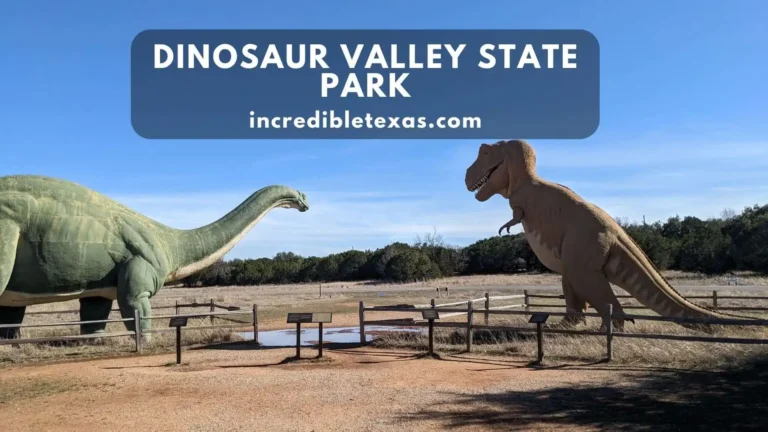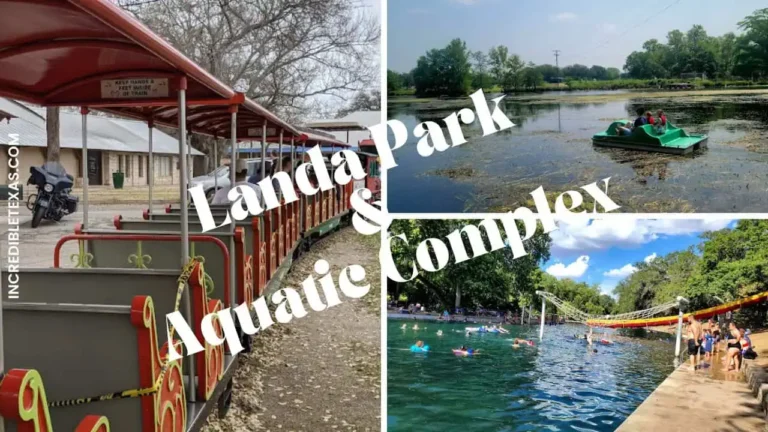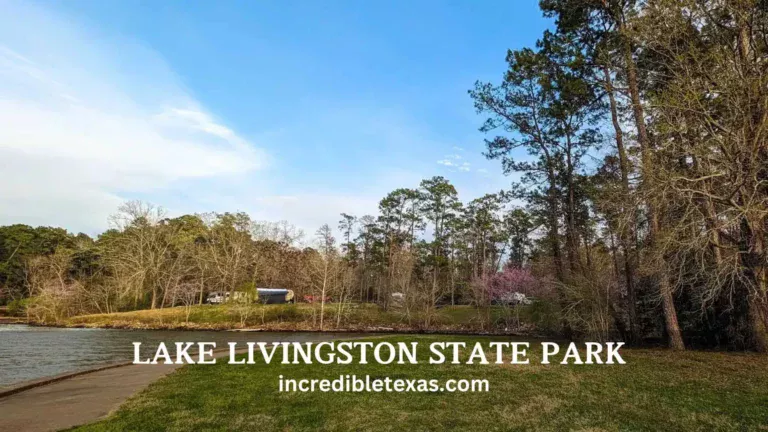Explore Big Bend National Park: Map, Hours, Camping, Hikes, Scenic Drives & More
Y’all ready for an adventure that’s as big as Texas itself? Nestled in the rugged beauty of the Chihuahuan Desert, Big Bend National Park is a treasure trove of natural wonders and a testament to the Lone Star State’s wild heart.
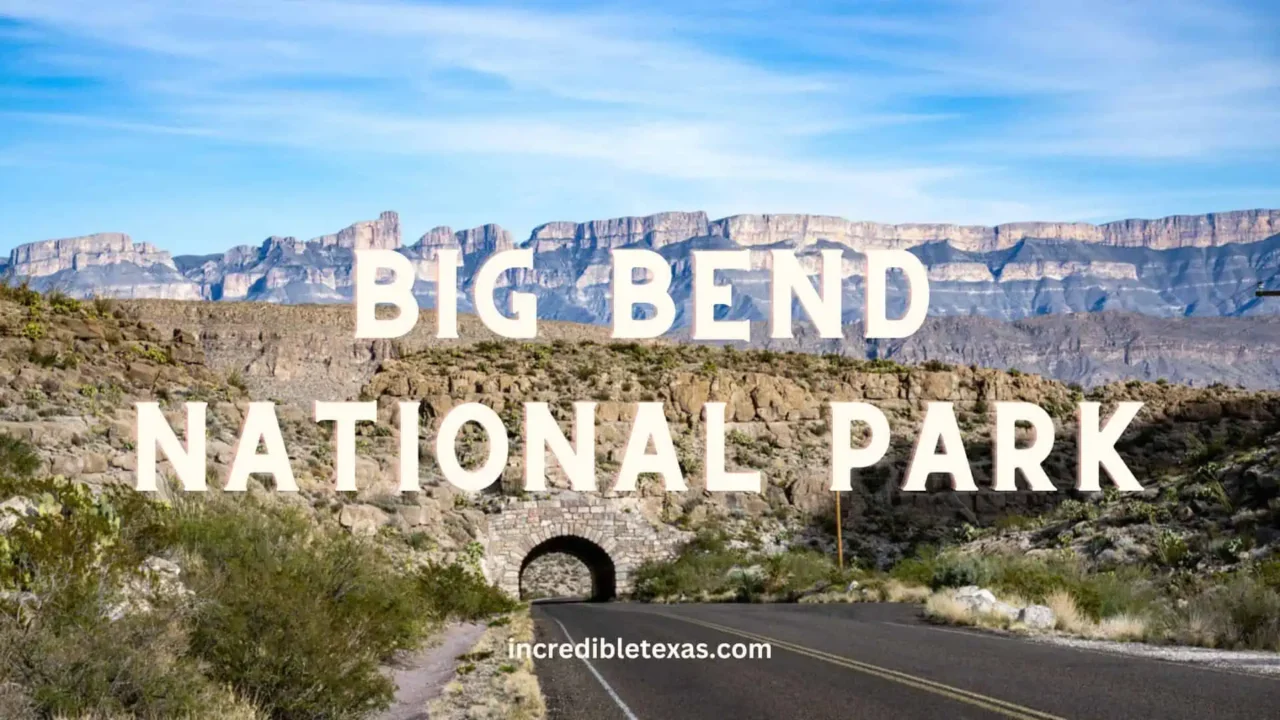
Join us as we dive into the majestic solitude of this vast landscape. From the Rio Grande’s winding path to the towering peaks that kiss the sky, every hour spent here promises memories that’ll stick with you longer than a West Texas sunset.
See also: Best Things to Do in Big Bend Ranch State Park
Big Bend National Park Map, Hours and Price
Visiting Big Bend National Park offers a remarkable adventure, and knowing the park hours and entry fees is essential for planning your trip. Let’s jump into the vital details.
See Also – Explore the Government Canyon State Natural Area: Map, Hours, Fees, Camping, and Hiking Trails
Park Hours
Big Bend National Park is open 24 hours a day, all year round, including holidays. This accessibility ensures that whether you’re an early bird wanting to catch the sunrise or a night owl interested in stargazing, the park welcomes you at any hour. But, specific visitor centers, services, and concessions have varying operating hours, which we recommend checking on the park’s official website before your visit.
See Also – Explore Martin Creek Lake State Park: Map, Hours, Pricing, Camping, Trails, and Fishing Tips
Entrance Fees
To explore the vast beauty of Big Bend National Park, visitors are required to pay an entrance fee, which varies depending on the mode of transportation. We’ve compiled the most current fee structure to help you budget your trip:
| Vehicle Type | Fee | Pass Validity |
|---|---|---|
| Private Vehicle | $30 | 7 Days |
| Motorcycles | $25 | 7 Days |
| Individuals (Walk-in, Bicycle) | $15 | 7 Days |
| Big Bend Annual Pass | $55 | 1 Year |
Children aged 15 and under are admitted free of charge. It’s also worth noting that the park offers several fee-free days throughout the year, typically coinciding with national holidays or events like National Public Lands Day. These days provide a fantastic opportunity to enjoy the natural wonders of Big Bend without the entrance fee.
See Also – Explore Bentsen-Rio Grande Valley State Park: Maps, Hours, Pricing, Trails, and Camping Options
Annual Passes and Discounts
For frequent visitors, the Big Bend Annual Pass offers unlimited access to the park for a year from the purchase date. Also, the America the Beautiful National Parks and Federal Recreational Lands Pass is accepted here, which covers entrance fees for a wide array of federal lands.
Discount passes are available for seniors, military members, and those with disabilities, acknowledging the diversity of visitors who come to experience the park’s majestic terrain.
Keeping these details in mind will help ensure your visit to Big Bend National Park is both enjoyable and well-planned. Remember to check the official National Park Service website for the most current information and any updates on hours and fees.
You can take a printout of the Big Bend National Park Map for your visit.
See Also – Explore the Ultimate Guide to Atlanta State Park: Map, Hours, Pricing, Trails, Camping, and Cabins
Big Bend National Park Camping
Camping in Big Bend National Park offers an immersive experience into the stunning landscapes and diverse ecosystems that make this park a must-visit destination in West Texas. When planning a camping trip to Big Bend, it’s crucial to consider the different options available, each offering a unique way to explore the park’s beauty.
Developed Campgrounds: For those seeking comfort and convenience, Big Bend National Park hosts three developed campgrounds: Chisos Basin, Rio Grande Village, and Cottonwood. These campgrounds provide amenities such as running water, picnic tables, grills, and restrooms. It’s important to note that Chisos Basin is ideal for small RVs and trailers due to its tight, winding roads.
- Chisos Basin Campground
- Rio Grande Village Campground
- Cottonwood Campground
Backcountry Camping: For adventurers looking to venture off the beaten path, backcountry camping permits allow for primitive camping in designated roadside sites or wilderness areas. This option is perfect for experiencing Big Bend’s rugged beauty up close but requires preparation and respect for Leave No Trace principles.
Reservations and Fees: Reservations for developed campgrounds can be made online and are highly recommended during peak seasons. Backcountry camping permits must be obtained in person at a park visitor center. Current fee structures and availability can be found on the official Big Bend National Park website, ensuring visitors have the most accurate information for planning their camping experience.
To ensure a memorable and safe camping experience at Big Bend National Park, always:
- Check the official park website for the latest information on campground availability and weather conditions.
- Reserve your campsite or obtain a backcountry permit in advance, especially during busy tourist seasons.
- Follow all park rules and guidelines to preserve the natural beauty and wildlife of Big Bend National Park.
Embarking on a camping journey in Big Bend National Park not only connects us with nature in one of Texas’s most iconic landscapes but also fosters a deeper appreciation for preservation and outdoor adventure.
Consider reading: Lake Livingston State Park Camping and Hiking Trails
Big Bend National Park Cabins
See Also – Explore South Llano River State Park: Maps, Hours, Pricing, Trails, Camping, and Cabins
Discover Comfort in the Wilderness
When planning a visit to Big Bend National Park, staying in a cabin can combine the allure of the wilderness with the comforts of home. While the park itself doesn’t offer cabin accommodations within its boundaries, the surrounding area provides a variety of options for those looking to stay close to nature without forgoing basic amenities.
See Also – Explore Abilene State Park: Maps, Hours, Pricing, Trails, Camping, and Cabins
Nearby Cabin Options
Several establishments around Big Bend National Park offer cabin rentals, each with its unique charm and set of amenities designed to cater to different preferences and needs. Here’s a quick overview of what you might find:
- Rustic Retreats: Perfect for those seeking a more authentic wilderness experience. These cabins often feature basic amenities and allow guests to disconnect and enjoy the park’s natural beauty.
- Luxury Cabins: For visitors who wish to explore Big Bend’s rugged landscapes by day and return to comfort at night, luxury cabins equipped with modern amenities including Wi-Fi, full kitchens, and comfortable bedding are available.
- Family-Friendly Stays: Options that cater to family groups, with multiple bedrooms, outdoor recreational spaces, and sometimes even pet-friendly policies, ensuring everyone has a comfortable stay.
See Also – Explore Bastrop State Park: Map, Hours, Pricing, Hiking Trails, Camping, and Cabins in Texas
Important Considerations
When booking a cabin near Big Bend National Park, there are a few key points to keep in mind:
- Booking in Advance: Cabins near the park are in high demand, especially during peak visiting seasons. Early reservations are crucial to securing your preferred dates.
- Location: While staying outside the park, consider the proximity to park entrances. Some cabins are located closer than others, impacting your daily commute to and from the park.
- Amenities and Policies: Confirm the amenities provided and understand the rental policies, especially about cancellations, pets, and additional fees.
Choosing the right cabin can enhance your Big Bend experience, merging the serenity of nature with the comfort and convenience of modern accommodations. Our advice is to research well, book early, and prepare for an unforgettable adventure in one of Texas’ most majestic natural settings.
See Also – Explore Colorado Bend State Park: Map, Hours, Camping Options, and Hiking Trails
Big Bend National Park Hiking Trails
Exploring the vast expanses of Big Bend National Park is a must for outdoor enthusiasts visiting Texas. With an array of trails varying in difficulty, scenery, and length, hiking in Big Bend offers something for every level of adventurer.
We’ve gathered information from trusted sources to ensure you have the most helpful details for planning your hiking adventures in Big Bend National Park.
See Also – Comprehensive Guide to Cooper Lake State Park: Map, Hours, Camping, Cabins, and Hiking Trails
Choosing the Right Trail
When selecting a trail, it’s crucial to consider your experience level, the season, and how much time you have. Here are a few top picks that showcase the diversity of Big Bend’s landscapes:
- Santa Elena Canyon Trail: This is a relatively easy hike, ideal for families or those looking for a short adventure. The trail leads to stunning views of the Santa Elena Canyon, where the Rio Grande cuts a dramatic path through sheer cliff walls.
- Lost Mine Trail: Offering moderate difficulty, this trail rewards hikers with breathtaking vistas of the Chisos Mountains. It’s perfect for those looking to experience Big Bend’s unique mountainous terrain.
- South Rim Trail: For the more ambitious hiker, the South Rim Trail provides a challenging yet rewarding journey. This long-distance trail features some of the most spectacular panoramic views in the entire park.
See Also – Comprehensive Guide to Meridian State Park: Map, Hours, Pricing, Trails, Camping, and Cabins
Hiking Tips & Safety
Before heading out on any trail, ensure you’re well-prepared. Here are some key tips to keep in mind:
- Stay hydrated: Carry plenty of water, especially during the hotter months.
- Start early: Beat the heat and crowds by starting your hike early in the day.
- Respect wildlife: Keep a safe distance from any animals you encounter.
- Check the weather: Weather in Big Bend can change quickly. Always check the forecast before departing.
By choosing the right trail and taking necessary precautions, your hiking experience in Big Bend National Park can be both safe and exhilarating. With its diverse landscapes and awe-inspiring views, Big Bend is a true hiker’s paradise, offering unforgettable adventures in the heart of Texas.
See Also – Explore Resaca De La Palma State Park: Map, Hours, Pricing, Trails, Camping, and Cabins in Texas
What to Expect at Big Bend National Park
When planning a visit to Big Bend National Park, first-timers and seasoned visitors alike can look forward to an experience brimming with natural wonders and outdoor adventures. Nestled in the heart of Texas, this vast park offers a unique blend of scenic landscapes, diverse wildlife, and a rich world of flora. Here’s what you can expect:
- Diverse Landscapes: Big Bend’s terrain is remarkably varied, ranging from the rugged peaks of the Chisos Mountains to the vast expanses of the Chihuahuan Desert. River enthusiasts will also be drawn to the Rio Grande, which carves a dramatic path along the park’s southern boundary.
- Wildlife Encounters: The park is a haven for wildlife, including more than 450 bird species, making it a prime spot for birdwatching. Mammals such as black bears, mountain lions, and the elusive javelina call this park home. While encounters are memorable, it’s crucial to observe from a distance and respect their natural habitat.
- Hiking Trails: With over 150 miles of trails, hikers of all levels can find a path that suits their skill level and interest. Whether it’s a leisurely walk along the Rio Grande or a challenging hike to the South Rim for breathtaking vistas, Big Bend caters to every adventurer.
- Stargazing Opportunities: As a designated International Dark Sky Park, Big Bend boasts some of the darkest skies in the United States. Visitors can expect unparalleled views of stars, planets, and the Milky Way, especially profound on clear, moonless nights.
To make the most of your visit, it’s essential to plan ahead. Check the weather, pack plenty of water and snacks, and start your day early to avoid the midday heat. Whether you’re here to conquer the trails, spot rare wildlife, or simply soak in the majestic landscapes, Big Bend National Park promises an unforgettable experience.
See also: 20 Hidden Gems in West Texas You Can’t Miss
How to reach Big Bend National Park
Traveling to Big Bend National Park offers a journey through the striking landscapes of West Texas, but planning is crucial to ensure a smooth ride. Given its remote location, visitors should be prepared for a drive, as the park is not immediately close to major cities or airports.
The closest airports are in Midland-Odessa, about 200 miles away, and El Paso, approximately 325 miles away. From either airport, renting a car is a must since the final leg of the journey to Big Bend National Park requires traveling by road.
For those setting off by car, here are the main routes:
- From Dallas or San Antonio, take Interstate 10 West, then US Highway 385 South directly into the park.
- Coming from El Paso, opt for Interstate 10 East to Fort Stockton, then Highway 385 South to the park.
Remember, cell service in and around the park can be spotty or non-existent. Downloading maps or directions beforehand is highly recommended. Besides, due to its vast size, entering the park from one of its three entrances—Persimmon Gap in the north, Maverick in the west, or Boquillas in the east—requires knowledge of your lodging or camping location.
Here’s a quick reference table for driving distances from major cities to the park:
| City | Distance (miles) | Approx. Drive Time |
|---|---|---|
| Midland-Odessa | 200 | 4 hours |
| El Paso | 325 | 5-6 hours |
| San Antonio | 400 | 7-8 hours |
| Dallas | 500 | 8-9 hours |
Finally, it’s paramount to fill up your gas tank whenever possible as gas stations are few and far between in this remote area. Staying stocked with water and snacks for the journey is equally important to ensure a comfortable and safe trip to Big Bend National Park.
See Also – Comprehensive Guide to San Angelo State Park: Map, Hours, Pricing, Camping, and Trails
Tips for visiting Big Bend National Park
Visiting Big Bend National Park offers an immersive experience into the rugged beauty of the Texas world. To ensure you make the most out of your trip, we’ve gathered essential tips that promise both safety and enjoyment.
- Plan Your Visit According to the Season: Big Bend’s weather greatly influences activities available. Summers are scorching, while winters can be mild but unpredictable. Spring and fall offer the most temperate conditions, perfect for hiking and exploring.
- Stay Hydrated: The Texas sun is unforgiving. Always carry more water than you think you’ll need, especially on trails. A good rule of thumb is to drink at least one gallon of water per day.
- Wear Appropriate Clothing and Footwear: Invest in lightweight, breathable clothing to shield you from the sun while keeping you cool. Proper hiking shoes are a must for exploring the park’s rugged terrain. Don’t forget your hat and sunscreen.
- Be Wildlife Aware: Big Bend is home to diverse wildlife. While encounters with bears and mountain lions are rare, it’s crucial to know how to act if you come across them. Always maintain a safe distance from all wildlife.
- Take Advantage of Ranger Programs: The park offers various ranger-led programs that provide insights into Big Bend’s unique ecosystem, cultural history, and tips for safe exploration.
- Respect the Wilderness: Stick to marked trails to protect both the park’s delicate ecosystems and yourself. Remember, it’s not just about enjoying the beauty of Big Bend National Park but preserving it for future generations.
By following these tips, we’ll ensure our visit to Big Bend National Park is not only enjoyable but also respects the natural habitat that makes this place so special.
Things to do at Big Bend National Park
Exploring Big Bend National Park offers a vast array of activities that can satisfy every type of adventurer, from the avid hiker to the nature-loving photographer. Here’s a concise guide to what you can do at this magnificent park.
- Hiking: With over 150 miles of trails, hiking is a premier activity in Big Bend. Trails range from easy, family-friendly paths to challenging, full-day hikes. The Lost Mine Trail and Santa Elena Canyon are must-dos, providing breathtaking views and immersive nature experiences.
- Scenic Drives: For those who prefer to take in the beauty of the park from the comfort of their vehicle, Big Bend has several scenic drives. The Ross Maxwell Scenic Drive and the Rio Grande Village area offer stunning landscapes and are great for spotting wildlife.
- Stargazing: Big Bend is known for having some of the darkest skies in the United States. The lack of light pollution makes it an ideal spot for stargazing. The park even holds the designation of an International Dark Sky Park.
- Bird Watching: With over 450 bird species, Big Bend is a haven for bird watchers. Spring and fall migrations are particularly spectacular, but year-round, visitors can spot a variety of birds from roadrunners to golden eagles.
- River Trips: The Rio Grande forms the southern boundary of the park and offers opportunities for canoeing, kayaking, and rafting. Guided trips range from a few hours to multiple days, providing unique perspectives of the park’s canyons and wildlife.
- Photography: Photographers will find endless inspiration in Big Bend’s diverse landscapes, from desert flora and fauna to dramatic mountain vistas. Sunrise and sunset are particularly magical times for capturing the park’s beauty.
Each activity in Big Bend National Park opens up a new chapter of adventure, offering visitors a profound connection with nature and a deep appreciation for the great outdoors. Whether you’re trekking through the backcountry or enjoying a peaceful evening under the stars, the park’s wonders are bound to leave a lasting impression.
See Also – Explore Sea Rim State Park: Hours, Pricing, Trails, Camping, and Cabins Guide
Final Thoughts on Big Bend National Park
Big Bend National Park serves as a gateway to unparalleled adventures in the great outdoors. With its diverse range of activities, from hiking and bird watching to stargazing and river trips, there’s something for everyone to enjoy.
We’ve shared just a glimpse of what this magnificent park has to offer, encouraging you to dive deeper and experience its wonders firsthand. Let Big Bend be your next destination for a memorable journey into the heart of nature’s beauty.
FAQs on Big Bend National Park
What is the best month to visit Big Bend National Park?
The ideal month to visit Big Bend National Park is March, when the weather is most favorable for exploring. Mild temperatures, with highs often in the 70s and lows in the 40s (Fahrenheit), make outdoor activities comfortable. Plus, the spring bloom adds to the park’s scenic beauty, drawing numerous visitors.
Why is Big Bend National Park so popular?
Big Bend National Park is popular for its stunning landscapes, diverse wildlife, and outdoor activities like hiking and river rafting. Its rich cultural history, marked by ancient pictographs and archeological sites, adds to its allure, inviting visitors to explore the legacy of its native peoples.
How many days do you need at Big Bend National Park?
Ideally, allocate a minimum of two full days to explore Big Bend National Park. To fully experience its vastness and diverse regions, including Ross Maxwell Scenic Drive, Chisos Basin, and Rio Grande Village, consider extending your stay to three or four days.
What city is close to Big Bend National Park?
Marathon, Texas, is the nearest city to Big Bend National Park, serving as the primary gateway for travelers. Its proximity to the park, only about 70 miles away, makes Marathon an ideal starting point for visitors looking to explore the stunning landscapes and diverse wildlife of Big Bend.
